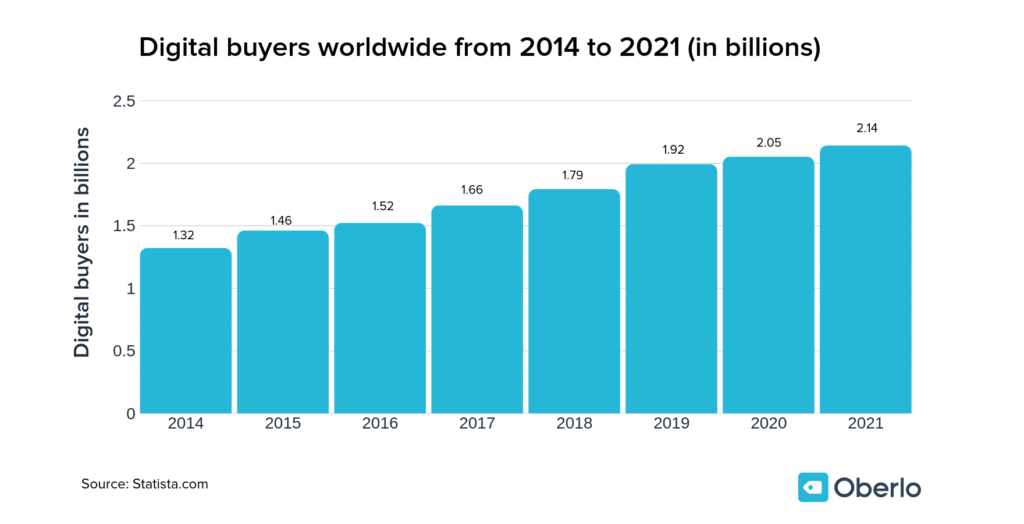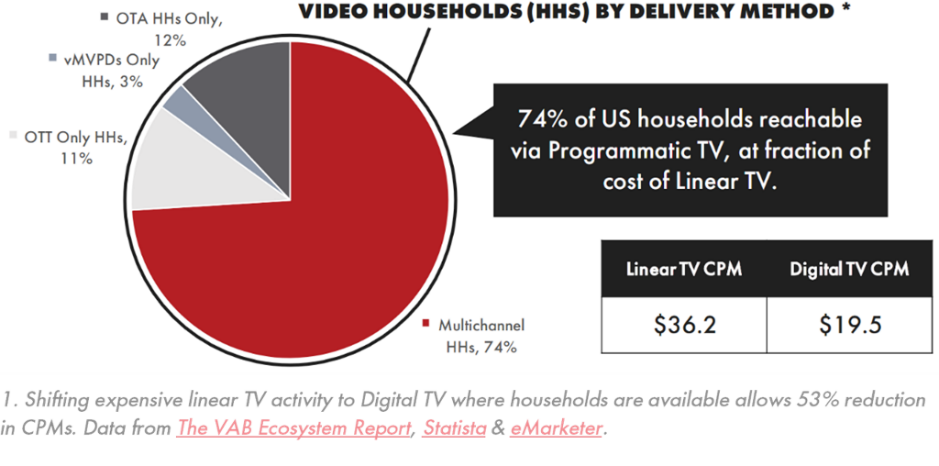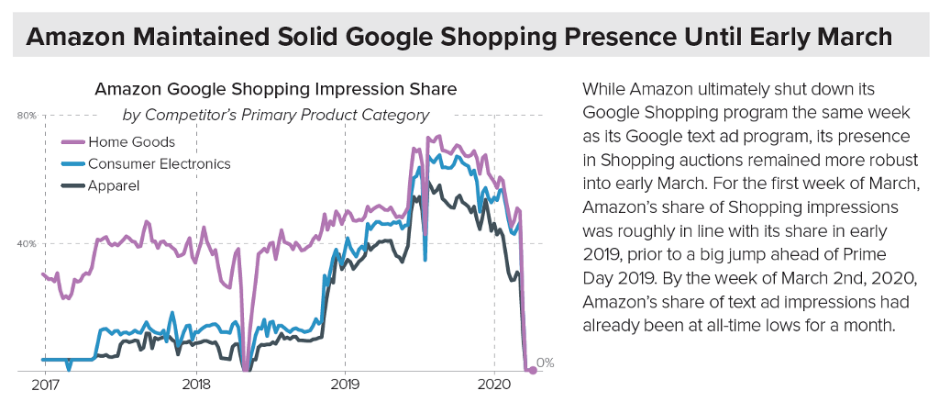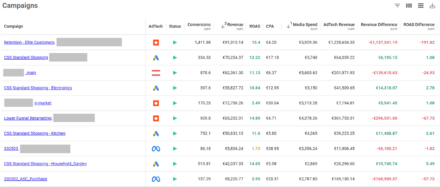Preparing For Performance: 5 Ways to Come Out Stronger In A Post-Pandemic Marketing Economy

The ongoing Coronavirus pandemic has already had a deep impact on the world of marketing, advertising, and e-commerce. From a rapid shift in customer behaviour to dramatic CPC & CPM changes in paid media, there are wide-ranging ramifications that could well result in permanent change.
What does this new reality mean for brands and advertisers looking to stay ahead, and what opportunities does it present to come out fighting on the other side?
Here are five key steps your business should take to build market share and emerge stronger in a post-pandemic marketing economy.
1. Move your marketing to where your customers now are
It’s already apparent that the pandemic has resulted in significant and rapid changes in customer behaviour. Lockdown restrictions and the closure of physical stores has seen users turn to the internet to make their purchases, affecting everything from the fashion and beauty sectors to FMCGs.
The shift to online was already a pre-pandemic trend, and 2019 was a pivotal year for online sales. For the first time ever, consumers were doing most of their shopping online, presenting a new set of challenges to physical stores. The global online shopping market size was already projected to hit $4 trillion in 2020, and the Coronavirus pandemic has almost certainly magnified this.

COVID-19 is likely to have accelerated a process that was already in motion – potentially with permanent effect. It’s more important than ever that brands optimise their digital marketing and sales strategies to stay ahead of the curve.
This optimisation should include implementing effective and aligned marketing strategies at every stage of the marketing funnel, from generating awareness through display and paid social, to pre-transactional content targeting those in the consideration phase. The latter is particularly important for businesses that may see a drop in conversions due to physical and online store closures. Capturing the interest of potential customers during their research phase may earn purchases when they start to open their wallets again.
2. Find new customers where CPAs are artificially declined
The pandemic has also presented opportunities to cut marketing spend by shifting activity to platforms with falling CPAs and an increasing customer presence.
A surge in interest in streamable video and audio content now provides ample opportunity to target potential customers for lower costs.
Statista found that an increasing number of US adults are listening to podcasts due to the Coronavirus, with Gen Z and Millennial’s upping their podcast consumption by 31% and 26% respectively. Studies show similar results for online TV and movies, with 43% of US adults more or somewhat more likely to watch movies via a streaming service due to the outbreak.
In the US alone, this increase in the number of households reachable via programmatic TV means that shifting activity from linear TV to digital could allow for as much as a 53% reduction in CPMs.

There are new opportunities in paid search too, with huge swathes of the competitive market disappearing from paid search and wider paid channels. Several large retailers, including the likes of Amazon, have almost entirely stopped their paid media spend, resulting in a sharp decline in CPCs that allows retailers to bid for pennies rather than pounds.

This doesn’t mean brands should dramatically increase their spend across paid channels for the sake of it. There’s still the on-going challenge around accurate marketing attribution modelling to consider. With traditional attribution platforms such as GA360 and Adobe providing a highly skewed picture, panic spending on seemingly profitable channels puts you at risk from fundamentally misunderstanding where your customers are coming from.
But with careful analysis of accurate attribution data, there is ample opportunity for businesses to take advantage of the uncertainty and see huge cuts in their paid media spend.
Attribution is broken. Discover how Corvidae can fix it.
3. Dominate in the new world with modern tech and data
With recent events putting the spotlight on digital, now is the opportune moment to invest in your tech stack and come out stronger post-pandemic.
For many online businesses 2020 holds an important deadline. From September 2020, Google will transition to mobile-first indexing and set a page speed target of less than one second for websites loading on a 3G connection. 2020 is effectively the year of the page speed wars – websites that meet this target by the deadline will be favourited in organic search results over slower-loading competitors.
For businesses with slow-loading websites, this is an apocalypse waiting to happen.
Simply put, if your competitors’ sites are faster than yours then you’re unlikely to appear in the top 3 search results for valuable keywords. Businesses risk experiencing significant ranking drops and a sharp decline in clicks and the subsequent revenue if page speed isn’t brought up to scratch.
Sub one second is an extremely ambitious target for most, meaning that businesses need to do everything they can ahead of the date to ensure they come out on top.
Read our advice for meeting the sub one second target here
Another way to invest in your digital platform is by taking steps towards adopting SaaS deployment of your websites and software – essentially moving your legacy tech stack into the cloud to allow execution of website deployment, ERP, CMS and customer data lake management.
The key advantages to using SaaS include accessibility, compatibility, and operational management. SaaS models also offer lower upfront costs than traditional methods and provide best-in-class security and privacy controls for your sensitive data.
In the last few years SaaS has very much become the mainstream for large corporations and small businesses alike. Cloud-based software is now the default deployment method in 2020 for nearly every type of business technology in the world. The vast majority of tech stacks will be either full or hybrid SaaS after their upcoming development cycles.
If you haven’t done so already, now is the time to migrate to ensure you stay on top of the trend.
4. Transition to customer-led multichannel acquisition strategies
In times of uncertainty it’s more important than ever to make sure your acquisition strategies are multi-channel, customer led, and informed by accurate attribution data.
Accurate attribution enables you to find new customers for significantly less spend. Pre-pandemic, advanced attribution modelling allowed for 87.5% cheaper CPAs on prospecting via Programmatic compared to Paid Search targeting generic keywords for new customer acquisition. Using Corvidae, health insurance providers Vitality were able to identify opportunities for a 37% media spend reduction by retargeting their advertising channels to ultimately allow for 50:1 ROI on use of the platform.
Best-in-class attribution platforms such as Corvidae also allow you to blend linear and digital advertising with attribution data that joins across both for improved returns.
With a change to the landscape of paid media and the impact on CPA, now is a good time to get a clearer picture of where your customers are coming from and optimise your paid media strategies for maximised ROI.
Discover how Corvidae can help you make more informed decisions about your advertising spend
It’s also important to ensure you’re effectively targeting high-value customers by serving personalised and aligned messaging in all stages of the marketing funnel. From paid social ads and Programmatic display, to personalised search snippets and landing pages, now is the perfect time to start deploying cutting-edge acquisition strategies.
This can all be enabled by making use of personalisation engines combined with accurate attribution data from tools such as Corvidae, which allow you to plug automated feeds into conversion optimisation platforms such as DV360.
5. Automate your BAU and support remote teams
If there’s one key takeaway from the Coronavirus pandemic, it’s that your ability to support remote teams effectively is essential. It’s difficult to predict the long-term impact of the crisis on the workplace, but it seems increasingly likely it will never return to pre-pandemic ‘normal’. With many businesses facing the reality of months of remote working, effectively supporting teams is going to be integral for maintaining business efficiency.
One valuable change you can make right now is the automation of your BAU. Automation should be keystone to your operating model as it allows for continuous delivery of business-critical tasks, especially in the event of strains to staff resource. Increased automation sets you up for the future and reduces the risk of disruption to your vital services, whilst allowing your remote teams to focus on services only they can provide.
Continuing to support your employees’ development is also going to be important. Disruption to employee training and growth could put you behind competitors in terms of cutting-edge services. At QueryClick, we launched the QC Academy as a platform for training and knowledge sharing that can all be completed remotely. The academy has enabled our employees to stay ahead of industry trends despite the disruption to working practices, and we have fast tracked commercialising the service to allow our customers to accelerate in-housing key elements of their marketing activity.
When we emerge from the other side of the current crisis, the businesses that were willing to adapt and embrace the ‘new normal’ are the ones that will come out on top. The Coronavirus pandemic has already had a significant and lasting impact on the world of digital marketing, presenting a huge opportunity for businesses to build significant competitive advantage instead of waiting for a ‘return to normal’ that may never come.
If you would like to chat to us about challenges you may be having, please contact us using the form below!
Own your marketing data & simplify your tech stack.
Have you read?
Chrome’s announcement on dropping cookie opt-in last month closed the door on a 5 year saga for marketers. But what is the landscape like in 2025 for cookie-based measurement?
Generative AI is transforming the way that marketers plan and assemble content for their Paid Ads. As big platforms like Google, Meta and TikTok increasingly build the tools needed to...
In a surprising move that has sparked heated debate, Mark Zuckerberg announced on his Instagram that Meta will be reducing its levels of censorship and in particular fact-checking on its...


